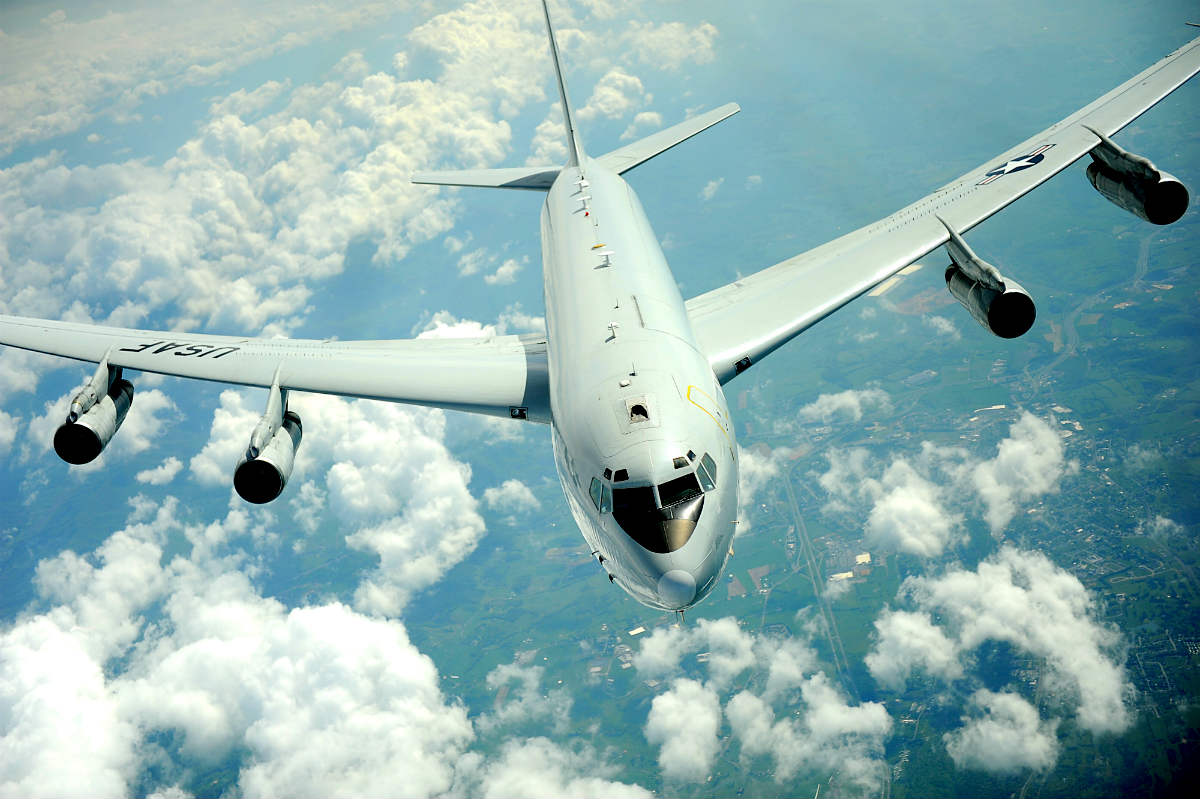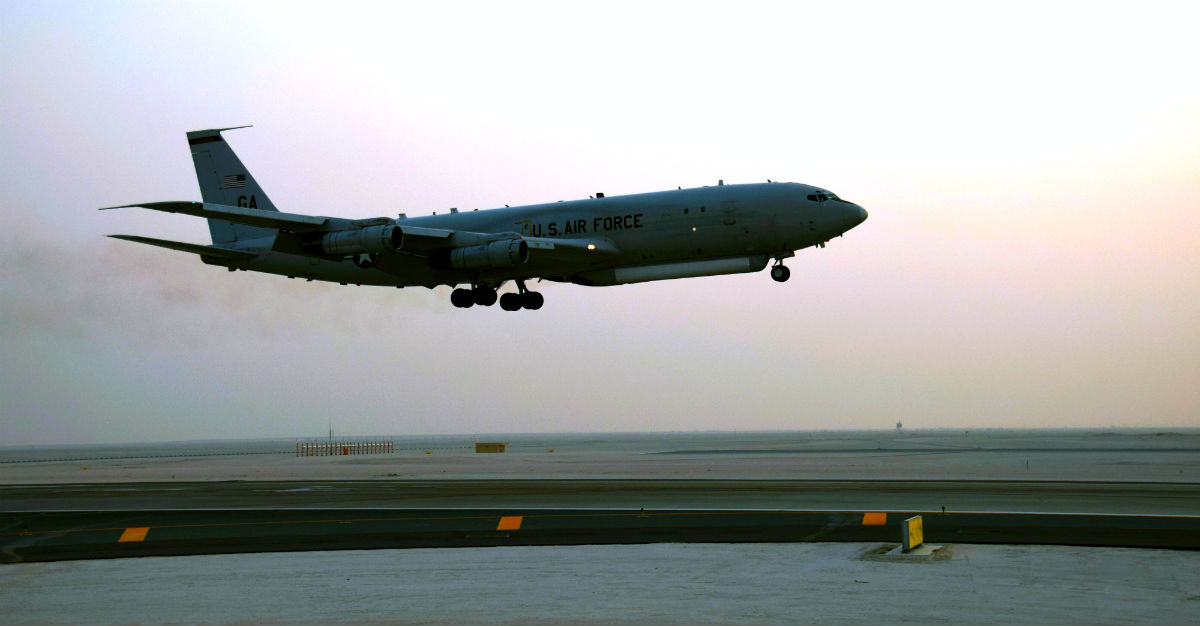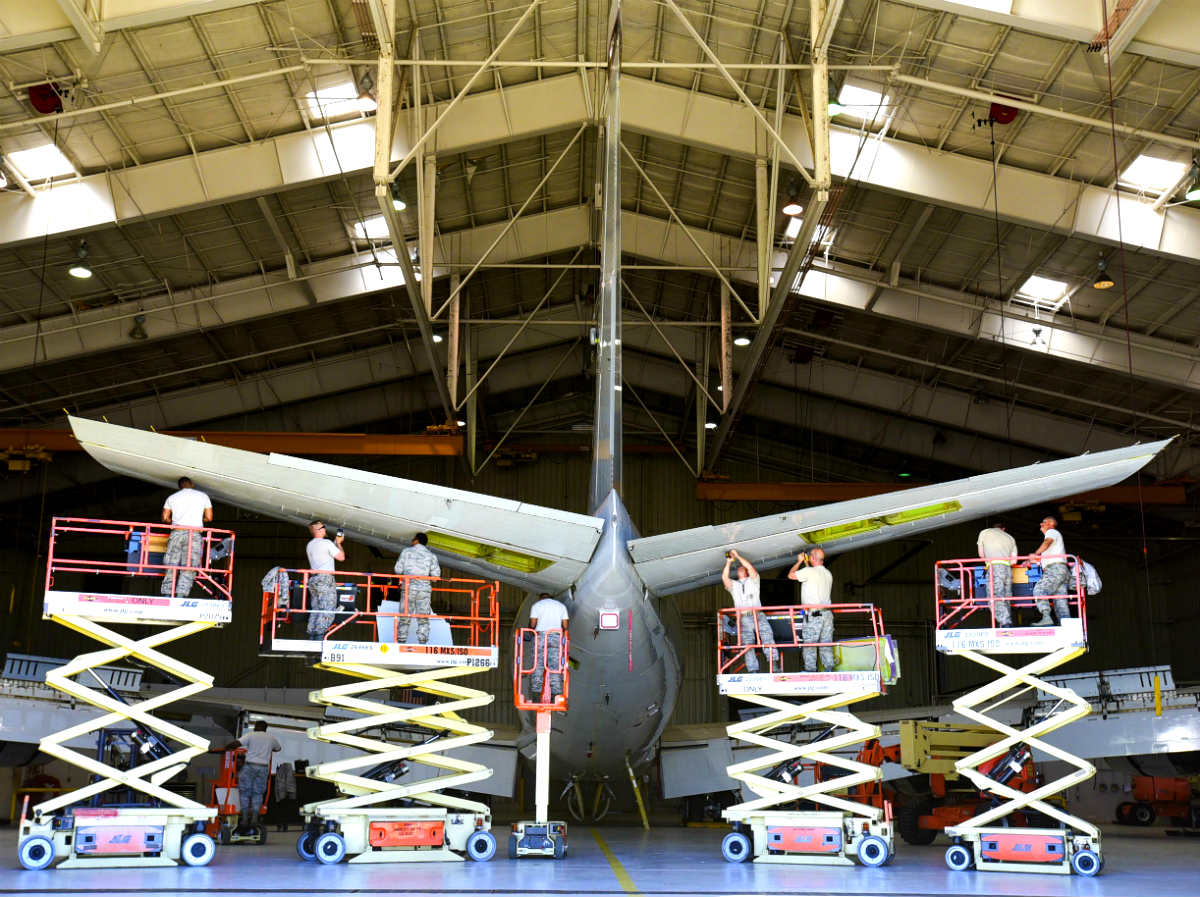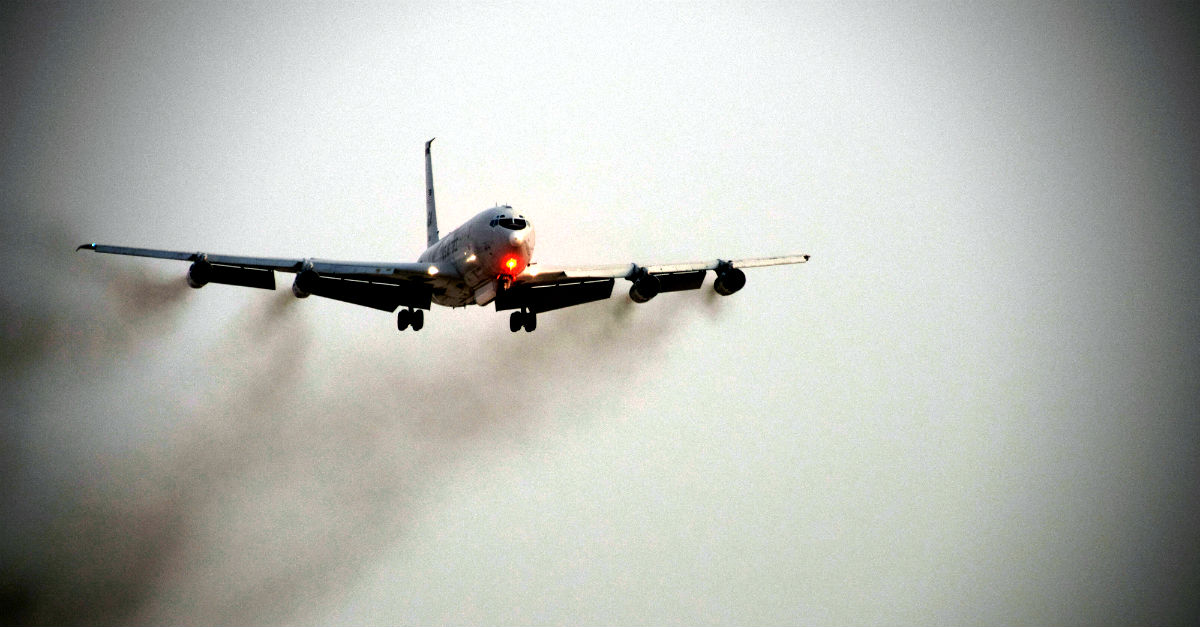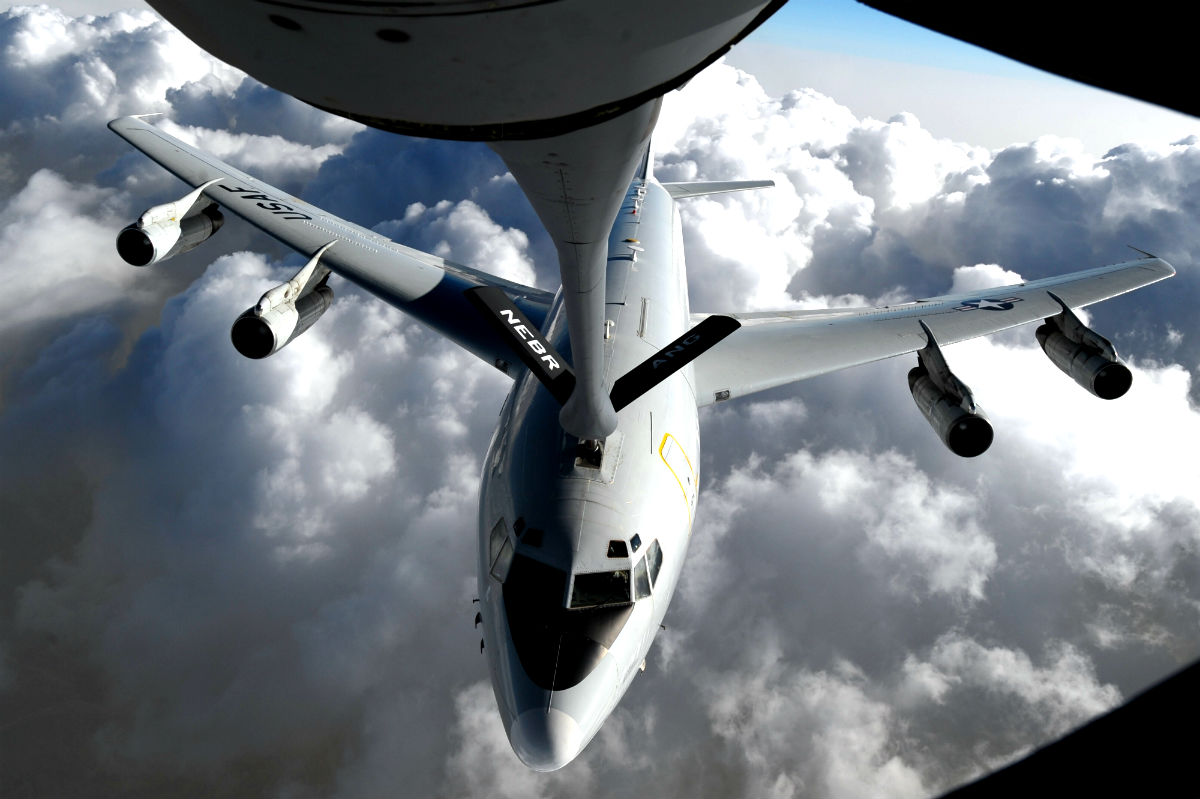Often dubbed an “AWACS for ground pounders,” the Northrop Grumman E-8 Joint STAR provides the US military an unmatchable God’s eye view of a battlespace up to 19,305 square miles (50,000 square kilometers) in size. The massive onboard radar, visible as a large bulge under the aircraft’s fuselage, can detect small moving targets out to a range of 250 kilometers. Even individual dismounted enemy fighters can’t hide from the J-Stars’ next-generation sensor suite and AN/APY-7 synthetic aperture radar.
Cold War Design Carried Over To The 21st Century:
Officially named the Joint Surveillance Target Attack Radar System (Joint STARS), this military aircraft is built off of a heavily modified Boeing 707-300 commercial liner frame. Designed in the late Cold War, the Pentagon almost canceled the J-STAR program after the collapse of the Soviet Union. That all changed, however, when the Persian Gulf War began in 1991.
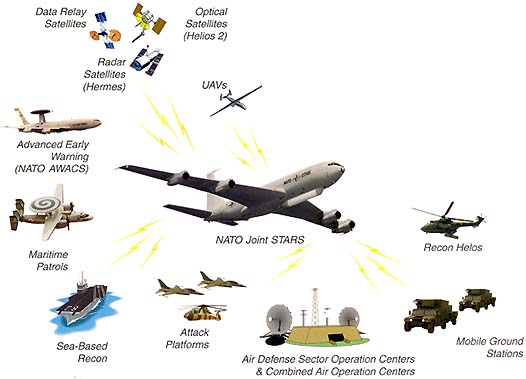
Facing an immediate need to scan large battle areas for mobile missile sites and dug-in armored units, the US Air Force rushed the first prototype E-8’s into service. In that short conflict, two J-Stars flew over 500 sortie flight hours with a 100% mission success rate. Between the Gulf War and the War on Terrorism, J-STARS also served as NATO’s go-to battle management platform during the Yugoslavian Civil War intervention.

God’s Eye:
While the onboard radar, infrared and SIGNIT systems on the E-8C can gather and relay enemy information in near-real time to common ground stations, that’s only part of this unique aircraft’s job. The J-Star and its battle staff of 18 officers and sensor operators can handle the full spectrum of command, control, communications, computers and intelligence (C4I) missions. Essentially acting as an on-the-scene airborne command post to coordinate forces from different service branches or foreign allies, and all in real-time.
Counterinsurgency Speciality:
Originally intended to coordinate large, complex and fluid mobile battlefields during a WWIII type scenario, J-STARS have excelled in small-scale counter insurgency warfare. As of 2015, the E-8 Joint Star fleet has flown more than 85,000 mission hours in support of combat operations in Iraq, Afghanistan, Syria and Libya.
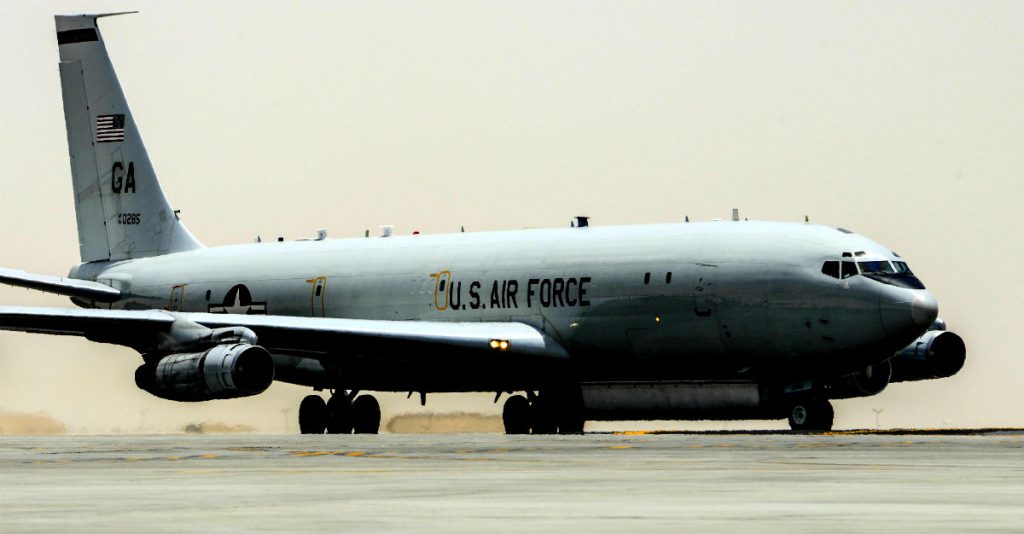
With the E-8C’s nine hours of unrefueled endurance, few other surveillance aircraft can match its time on-station. Which is a huge advantage for any aircraft supporting ground operations. Whether coordinating massive operations involving thousands of troops across vast region or helping a lone platoon in trouble to find a way out, the J-STAR is a true guardian angel in the sky.

Performance:
Thanks to recent upgrades in the E-8C version, J-STARS can also serve as a fire control network node. In several combat missions, J-STARS have identified mobile targets and directly guided AGM-154 C-1 Joint Standoff Weapons, fired by U.S. Navy F/A-18 Hornets, for successful engagement.
The E-8 Joint Star is also the US’s preferred surveillance aircraft for monitoring the Korean Demilitarized Zone. With its unparalleled ability to scan the DMZ for camouflaged infiltrators and spot any new force concentration for hundreds of kilometers north of the zone, J-STAR’s play a crucial role in keeping the peace on the Korean peninsula.
See E-8 Joint STAR Specifications
| Primary Function: Airborne battle management |
| Contractor: Northrop Grumman Corp. (primary) |
| Power Plant: Four Pratt and Whitney TF33-102C |
| Thrust: 19,200 pounds each engine |
| Wingspan: 145 feet, 9 inches (44.4 meters) Length: 152 feet, 11 inches (46.6 meters) |
| Height: 42 feet, 6 inches (13 meters) |
| Weight: 171,000 pounds (77,564 kilograms) |
| Maximum Takeoff Weight: 336,000 pounds (152,409 kilograms) |
| Fuel Capacity: 155,000 (70,306 kilograms) |
| Payload: Electronic equipment and crew |
| Speed:449 – 587 mph (optimum orbit speed) or Mach 0.52 – 0.65 (390 – 510 knots) |
| Range: Nine hours |
| Ceiling: 42,000 feet (12,802 meters) |
| Crew: (Flight Crew) Four; (Mission Crew) Normally 15 Air Force and three Army specialists (crew size varies according to mission) |
| Unit Cost: $244.4 million (fiscal 98 constant dollars) |
| Initial Operating Capability: December 1997 |
| Inventory: Total Force, 16 |
